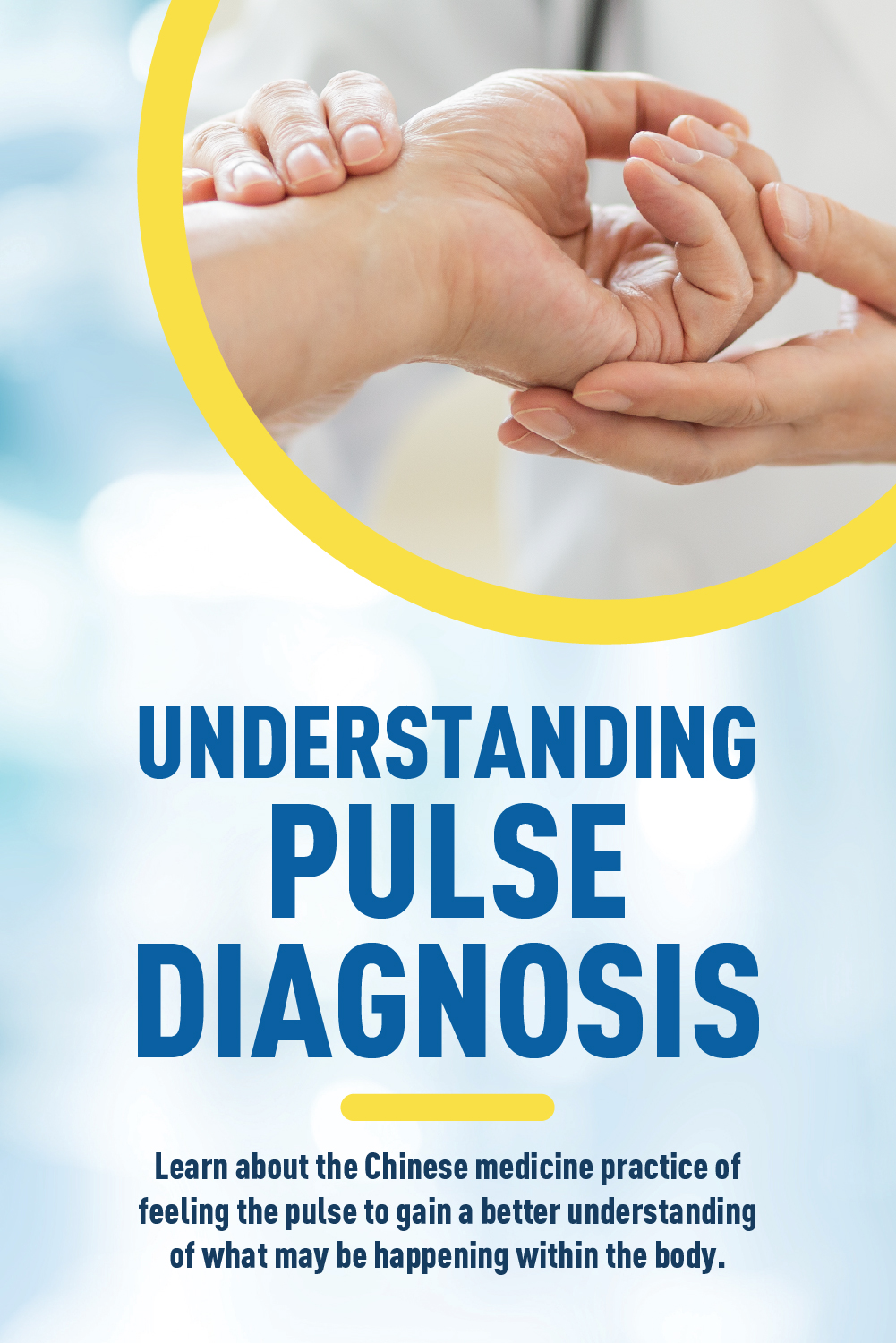Expert Advice

Acella Pharmaceuticals is partnering with Ericca Burke, a board-certified licensed acupuncturist, to bring greater awareness to the importance of thyroid care and education. This post was sponsored by Acella Pharmaceuticals.
Disclaimer: The information provided is for educational purposes only and does not substitute professional medical advice. Consult a medical professional or healthcare provider before beginning any exercise, fitness, diet, or nutrition routine. Acella Pharmaceuticals does not endorse, promote or sponsor any products or brands mentioned in this article. The views expressed here are those of the author.
Pulse diagnosis is the Chinese medicine practice of feeling the pulse to gain a better understanding of what may be happening within the body. For those with a thyroid condition, it is one method that a holistic practitioner would use to diagnose how the body is working in harmony or to identify areas that may need attention.
Support for a Variety of Health Concerns
Chinese medicine, including acupressure, focuses on the overall wellness of the individual, and the goal is to balance the energy so that the body can heal itself. Since acupressure activates acupuncture points, it can be used to help with a variety of health concerns, including hypothyroidism symptoms.
Background on Pulse Diagnosis
Pulse diagnosis is an important diagnostic tool used in Chinese medicine. It was documented over 2,200 years ago in the Huangdi Neijing, also known as The Yellow Emperor's Classic of Medicine. Feeling a patient’s pulses allows the practitioner to gain insight into the patient’s condition. This includes the general state of their blood, “qi” or energy, and organs, and whether there are any blockages, excesses, or deficiencies. Pulse diagnosis is typically performed in combination with tongue diagnosis, observation, palpation, and interviewing to get a full picture of what is going on with the patient.
How Pulses are Taken in Chinese Medicine
Pulses are felt on the inside of both wrists at the radial artery. Many practitioners will start by palpating the pulses on both wrists at the same time. This gives an overall perspective on the condition of the pulses. Next, the pulses will be checked individually on one arm and then on the other arm.
The practitioner uses three fingers – the index finger, the middle finger, and the ring finger – to feel pulses. There are three positions or locations on each arm that the practitioner checks:
• Cun Position - The index finger is placed at the location closest to where the arm meets the hand at the wrist joint. • Guan Position - The middle finger is placed next to the index finger. • Chi Position - The ring finger is placed next to the middle finger.
Pulses are palpated by exerting different levels of force to feel the pulse in each position at three different levels. The first is a light touch at the superficial level, the second is a moderate touch at an intermediate level, and the third is a heavy touch at the deep level. Pulse diagnosis is difficult to master, and it can take years of study to be able to interpret pulses correctly.

Mapping to the Organs
Each position maps a different part of the body and gives the practitioner an overall perspective on the condition of that area of the body.
Left Arm
• Cun Position - Maps to the heart and small intestine • Guan Position - Maps to the liver and gall bladder • Chi Position - Maps to the kidney and the bladder
Right Arm
• Cun Position - Maps to the lung and large intestine • Guan Position - Maps to the spleen and stomach • Chi Position - Maps to kidney energy in terms of metabolism and circulation
Pulse Qualities
Pulses are evaluated in terms of their depth, speed, strength, shape, and rhythm. Combinations of these attributes have been identified and categorized into dozens of types. Some textbooks have recorded up to 40 different types of pulses. Broader categories refer to overall qualities, like a rapid pulse, which would have more than five beats per breath, or a weak pulse, which is difficult to feel.
Pulses vary depending on sex, age, body morphology, emotional state, and even the season. It is said that the pulse retreats in the winter and is felt at a deeper level during cold weather; conversely, the pulse is more superficial and present during the warm summer months. Generally, a pulse is considered normal if it feels smooth, even, and strong yet soft, with a rate of about four beats per breath.
Since every person is different, the relative nature of each pulse position is important. For example, a pulse that is strong overall but is weaker at one position can indicate a deficiency in that organ system.
How Pulses Relate to Hypothyroidism
Feeling a patient’s pulse can give insight into the energetic imbalance behind the thyroid condition. For example, if a patient’s kidney and spleen energy are weak and not sufficient to support the needs of the thyroid, the pulses will typically feel slow, weak, and deep, particularly in the positions that correspond to the kidney and spleen organs.
If the patient’s blood and overall energy are low and are the primary factor underlying an underperforming thyroid, then the pulses may feel choppy because the blood is not sufficient to flow smoothly through the vessels. These are a few examples of possible pulse readings that can indicate what is behind a hypothyroid condition and give the practitioner information on how best to balance the patient’s energy and support the patient’s thyroid most effectively.
Pulse diagnosis is performed by a trained professional. But a great way to gain different insight into your body using holistic therapeutics.

2054-v1
Note that DTE products, including NP Thyroid®, have not been reviewed by the FDA for safety or efficacy.
IMPORTANT RISK INFORMATION, INCLUDING BOXED WARNING & INDICATIONS
Important Risk Information
Drugs with thyroid hormone activity, alone or together with other therapeutic agents, have been used for the treatment of obesity. In euthyroid patients, doses within the range of daily hormonal requirements are ineffective for weight reduction. Larger doses may produce serious or even life-threatening manifestations of toxicity, particularly when given in association with sympathomimetic amines such as those used for their anorectic effects.
- NP Thyroid® is contraindicated in patients with uncorrected adrenal insufficiency, untreated thyrotoxicosis, and hypersensitivity to any component of the product.
- In the elderly and in patients with cardiovascular disease, NP Thyroid® should be used with greater caution than younger patients or those without cardiovascular disease.
- Use of NP Thyroid® in patients with diabetes mellitus or adrenal cortical insufficiency may worsen the intensity of their symptoms.
- The therapy of myxedema coma requires simultaneous administration of glucocorticoids.
- Concomitant use of NP Thyroid® with oral anticoagulants alters the sensitivity of oral anticoagulants. Prothrombin time should be closely monitored in thyroid-treated patients on oral anticoagulants.
- In infants, excessive doses of NP Thyroid® may produce craniosynostosis.
- Partial loss of hair may be experienced by children in the first few months of therapy but is usually transient.
- Adverse reactions associated with NP Thyroid® therapy are primarily those of hyperthyroidism due to therapeutic overdosage.
- Many drugs and some laboratory tests may alter the therapeutic response to NP Thyroid ®. In addition, thyroid hormones and thyroid status have varied effects on the pharmacokinetics and actions of other drugs. Administer at least 4 hours before or after drugs that are known to interfere with absorption. Evaluate the need for dose adjustments when regularly administering within one hour of certain foods that may affect absorption.
- NP Thyroid® should not be discontinued during pregnancy, and hypothyroidism diagnosed during pregnancy should be promptly treated.
Indications
NP Thyroid® (thyroid tablets, USP) is a prescription medicine that is used to treat a condition called hypothyroidism from any cause, except for cases of temporary hypothyroidism, which is usually associated with an inflammation of the thyroid (thyroiditis). It is meant to replace or supplement a hormone that is usually made by your thyroid gland.
NP Thyroid® is also used in the treatment and prevention of normal functioning thyroid goiters, such as thyroid nodules, Hashimoto’s thyroiditis, multinodular goiter, and in the management of thyroid cancer.
Revised
10/2023
You Are About To Leave This Website
By clicking continue, this link will take you to a website to which Alora Pharmaceuticals’ Policies & Terms of Use do not apply.
^Based on prescriptions filled, NP Thyroid® is the #1 Prescribed DTE in the United States. Source: IQVIA National Prescription Audit (NPA) data on file. Acella Pharmaceuticals, LLC.
